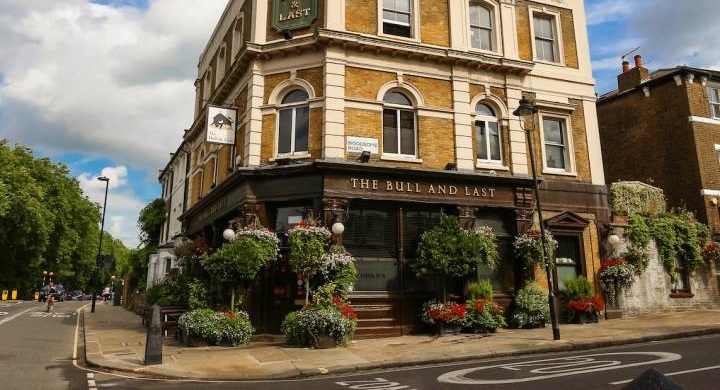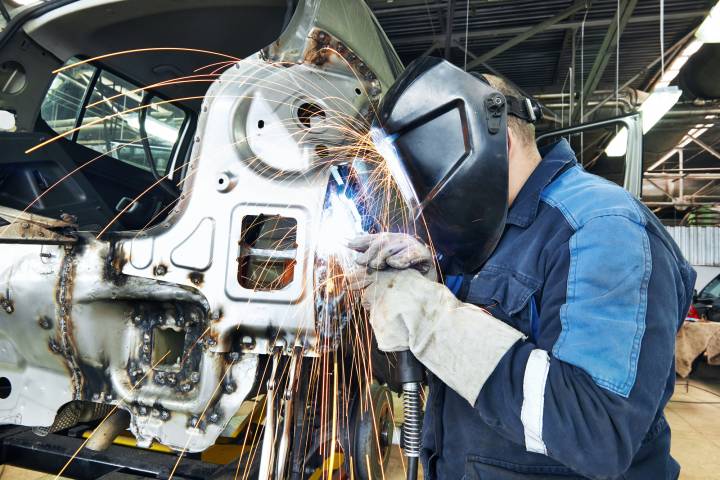Going to the pub or having a meal out continued to grow in popularity in the UK over August, as the ‘Eat Out to Help Out’ scheme helped to push pub visits over 83% for the first time since lockdown. Huq’s Restaurants & Pubs Index shows that footfall to pubs saw a sharp rise over the last week, reaching the new series high on Saturday (22 August) and that Government incentives appear to have given consumers more confidence about supporting their local.
The number of country residents attending their offices in the Netherlands has dropped 12% from its post-lockdown high during the last week as a rise in Covid-19 cases in the country and overseas subverts the return to normal for many. Huq’s new Return-to-Work Indicator had identified growing numbers of people getting back into work after the series low in April.
The UK’s residential construction industry sees activity levels steady at around 50% of pre-Covid levels following a rapid rebound from lockdown in late April, according to a new indicator published today by Huq Industries. The Huq Residential Construction Index showed worker presence fall rapidly as lockdown set in during the last week of March to around 20% of previous levels before recovering to half of normal levels just as quickly from April 20th.
Customers visiting foodservice outlets in the UK rose to almost 60% of pre-lockdown levels in the last two weeks, as the government’s ‘Eat Out to Help Out’ scheme proves its worth by luring customers back into restaurants and pubs. Huq’s Restaurants & Pubs Index shows that since the scheme launched on 3 August, visits to restaurants have increased rapidly – climbing from 38pts to 55pts (a 44% increase).
Office workers in the US and UK have been among the most reluctant of nations to return to working from their offices, as Huq’s geo-data reveals office attendance across these two countries has yet to surpass 20% of what it was prior to the pandemic. This slow progress in office attendance stands in contrast to other countries in Europe, where both France and Spain for example have seen significantly more office attendance over the last month.
The proportion of workers travelling to their offices is holding steady at around 18% of pre-lockdown levels in the UK, as Huq’s high-frequency geo-data offers clues as to the impact of the new a work-from-home norm. Office-based workplace presence dropped to near-zero when lockdown came into effect at the end of March with presence seeing a slight increase towards the end of May as it ended.
In the last week, footfall across the UK’s foodservice sector has come close to 50% of pre-lockdown levels, but in the main appears to have steadied at around 35% since establishments re-opened for dine-in on July 4th. Both restaurants and quick-service outlets both achieved their highest levels since lockdown began, with restaurants peaking at 45pts on August 5th in contrast to quick-service’s high of 46pts following Super Saturday in early July.
Paris is the first major European city to see residents’ population mobility approach pre-lockdown levels, as Huq’s high-frequency geo-data shows that the cities that exercised most restraint under lockdown have been the fastest to demonstrate population movement increase. Data from Huq’s Daily Distances Indicator, which measures the the extent to which people travel about their cities, shows that while Paris has seen a significant increase over the last few weeks, cities that were less restricted during lockdown have been slower to recover – or even show a decline in resident mobility.
The recovery of the UK’s Restaurants and Pubs sector continues to take longer than hoped, with Huq’s mobile geo-data showing that footfall across these businesses has slowed to just 25% of pre-lockdown levels in the last week. According to Huq’s Foodservice Index, Restaurants and Pubs in the UK saw a steady increase in footfall to around third of pre-lockdown levels following ‘Super Saturday’ on 4 July, however the trajectory of this recovery appears to have been short-lived.
The recovery of Key Industrials across Europe appears to have plateaued in the last three weeks, as high-frequency geo-data shows that following a sharp rise at the end of June, footfall to manufacturing plants has held at around 65% of pre-lockdown levels. According to Huq’s ‘Key Industries Indicator’, which measures the number of employees attending workplaces across a range of sectors, Defence, Chemicals and Biotechnology continue to be the busiest in comparison to pre-lockdown levels (all around 65% in the last few days).
Footfall to Italy’s Restaurants, Cafes and Hotels has risen exponentially since the end of June, with levels now double what they were in January as seasonal trade appears to be returning. According to Huq’s ‘Key Industries’ Indicator, Italy’s hospitality’s sector has seen the fastest rate of recovery in Europe and it was the first country to see the recovery rate of footfall to restaurants and cafes rise above that of supermarkets.
Footfall across UK supermarkets has risen to 90% of pre-Covid levels in the last two weeks as Huq’s mobility data suggests that Brits have had more confidence to visit these outlets since the 4th July, which coincides with the date that hospitality and dine-in establishments were allowed to re-open.
In today’s Financial Times, European Economics reporter Valentina Romei and Data Visualisation journalist John Burn-Murdoch reveal how an overall plateau in economic activity points to headwinds for the region. Among other datasources including Google, OpenTable and Refinitiv, the FT uses data from Huq’s European Travel Monitor to reflect how international travel across ten countries is recovering from the effects of Covid-19.
Data up until Saturday July 18th shows that mean footfall across all US Consumer industries has regained 90% of pre-lockdown levels, as Huq’s high-frequency geo-location data shows that the country is leading it’s comparative set of developed nations in terms of consumer-led economic recovery from Covid-19. Huq’s ‘All Consumer’ Indicator shows that the US had been tracking closely in line with China despite its head-start, with the two economic juggernauts rising steadily after lows in March 2020.
Following the lifting of restrictions both domestically and for visitors from overseas, holiday favourites Spain and Italy have recovered 87% and 78% of 2019 levels respectively. Greece meanwhile is flat through June-July at around -150% of year-on-year levels. To provide additional context, the UK stands at just 22% of of latest year’s equivalent value while throughout lockdown Sweden experienced an average maximum drop to around 55% of year-on-year levels, and is now above or inline with 2019 at 105%.
The number of Brits present in countries across Europe reached a new high on the day the Government ended its 14-day quarantine rule for returning travellers on Friday (10 July) According to Huq’s European Travel Indicator for GB Residents, which tracks the change in British residents present in countries across Europe, the number of ‘Brits abroad’ regained 59% of pre-lockdown levels as they were permitted to travel to other countries without the need to self isolate upon return. However, this rise only corresponds to 38% of 2019 levels.
Footfall to Restaurants and Pubs in the UK has climbed to a third of pre-lockdown levels, with high-frequency geo-data showing how attendance has continued to rise following ‘Super Saturday’ but remains low overall. According to Huq’s Index for Restaurants and Pubs, footfall reached a new high of 33% of ‘normal’ levels on Friday (10 July).
Key industrials across Europe are showing signs of stronger recovery, with footfall to manufacturing plants in both staple and discretionary sectors reaching new highs in the last week. According to Huq’s ‘Key Industries Indicator’, which tracks the number of employees attending workplaces across a range of sectors, every industry measured has seen a sharp increase since the middle of last month
Footfall to the hospitality sector across the UK climbed to 60% of pre-lockdown levels on ’Super Saturday’, but despite reports of crowded streets in Central London, a lack of tourists and entertainment saw pubs and restaurants in the Capital see just a quarter of their usual trade. Huq’s Indicator, which tracks footfall activity across the hospitality sector in the UK, dropped to a fifth of pre-lockdown levels throughout April and May as businesses pivoted their offerings but has yet to see the bounce back that people have been hoping for.
The number of Germans travelling overseas has climbed to 75% of pre-lockdown levels over the last two weeks, according to the latest data from Huq’s new ‘European Travel Monitor’. The Monitor shows that German residents have been among the fastest in Europe resume international travel. The number of residents leaving Germany relative to pre-lockdown levels is followed by a rise in residents from France travelling abroad (62% of pre-lockdown levels) followed by Netherlands residents (60%) and the UK (42%).


























